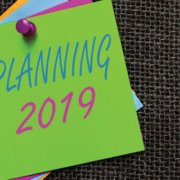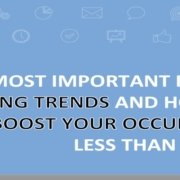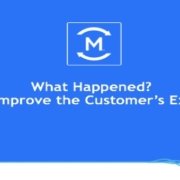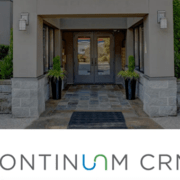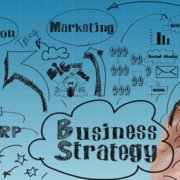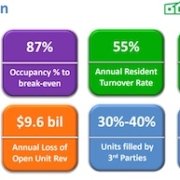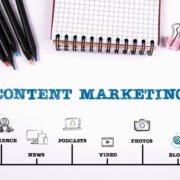How to Create an Effective Senior Living Marketing Plan
It’s that special time of year. Dreams of sugar plum fairies and winter wonderlands are interrupted with the seasonal realities of Q4. A blizzard of demands grows our To Do list. And all of a sudden, it’s next year. Still a bit hazy from some holiday cheer, you might rush to cobble together a senior living marketing plan for Q1.
It’s fine, you think. After all, look at all those online and aggregator leads coming in!
But is it really OK?
Maybe not, especially when you consider the following…
- Online leads tend to have a lower quality score than other lead sources, such as referrals.
- Move-outs tend to increase this time of year, meaning you’ll need even more move-ins.
- In some regions, weather can wreak havoc with promotional efforts.
- Not to mention, as we update this article, a pandemic has changed senior living marketing (possibly for good).
So what can you do to make sure you’re not panicking on January 1?
Here are some strategies to follow NOW so that you can hit the ground running with an effective senior living marketing plan for the upcoming year, quarter, or month…
1. Set goals based on real numbers.
Number-driven goals are best, since it’s easier to measure their success. Move-in volume is a typical, measurable sales number (or, at least, it used to be pre-COVID). Set a realistic move-in goal for each month. If you’re not sure, look at the last 12-24 months. (You’ll want to consider 2018 and 2019 numbers to get a realistic sense of what the numbers look like during “normal” times. Then, you’ll want to consider 2020 numbers, too.) And set a monthly marketing budget. You need these numbers to plan.
Once you have a move-in number and a budget number for the month ahead (or better yet, the upcoming quarter or even the whole year), planning becomes easier.
For this exercise, let’s say the move-in number for January is 4.
Based on a budgeted 4 move-ins, how many leads do you need? Leads will equal the number of move-ins divided by your community’s lead-to-move-in conversion rate.
So let’s say your average lead-to-move-in conversion rate over the past 12 months is 12.8%. The math: 4 move-ins divided by .128 = 31 leads. So, in general, you’ll need 31 leads to produce 4 move-ins.
But is that really the number? Probably not for January.
Why? Well, what do we know about Januarys?
- Online and lead aggregator volume typically spikes.
- Move-outs often increase.
- The weather stinks in ¾ of the country. Think ice, snow, rain, wind, and cold. And even if you’re working in a community that’s welcoming snowbirds, you’re thinking how you can keep them with you year-round.
Now, what do we know in general?
- Not all lead sources are equal.
- So many variables impact an average annual conversion rate.
- Leads produced in the current month will most likely convert next month depending on several factors both in and out of your control.
So, most likely, you will need more than 31 leads.
All that said, 31 leads is a good starting point. From there, you can develop a senior living marketing plan that will generate these leads. Then, you can let lead aggregators produce gravy for you.
2. Identify target personas.
How do you bucket the various types of people contacting you and sitting in your CRM? Keep your various buyer personas in mind, including where they might be on their journey:
- Some know they have problems, but don’t know what will solve them.
- Others are researching their options on the internet (perhaps prompted by a postcard or a newspaper ad they saw).
- Some are now calling you, touring communities, talking with lead aggregators, and actively weighing all the options (meaning your direct and indirect competition).
- Meanwhile, a few are ready to buy, but they may have some concerns.
- Others may move back up the funnel because of a bad tour, guidance from a friend, a change in financial situation, or other reasons.
You’ll want to bucket your targets.
- On the lead generation side, you’re looking at seniors, their adult children, professional influencers, and residents with friends they can refer to you.
- On the consumer side, you’ll look at demographic and socio-economic sweet spots based on an analysis of your CRM data with a data insights company.
- On the lead nurture side, you most likely are bucketing by time frame to moving in – hot, warm, and cold.
Some of you may have more sophisticated lead scoring in place. Your hot and warm leads should be a enjoying a very personalized sales approach based on your discovery.
3. Select the right marketing campaign to get the job done.
Now that you’ve bucketed your targets, what will you do to generate new leads, nurture your various lead types, and influence professionals and residents to refer to you?
Consider three types of senior living marketing campaigns:
- Event promotions
- Product/brand promotions
- Price promotions
Event promotions are designed to work hard to encourage someone to visit your community and experience the lifestyle you offer. If you are promising an event, you need to ensure you can pull it off successfully. Events are valuable for lead generation and lead nurturing. However, you can also leverage daily resident activities, clubs, and outings as lead nurturing events once you better understand the various interests of people in your CRM.
We recommend one event a month for lead generation. Yes, they are time consuming, but if executed well, you really drive home the value of what you offer to residents. (Psst. Need help creating collateral to promote your events? Check out SMARTbrand.)
Product/brand promotions focus on people on the early side of the buyer’s journey. So your message should focus on things like what you do and what makes your community different/better than your competitors. In essence, you’re making the local market aware of your community. This might involve placing advertisements in places that reach your target audience, both online and off.
Price promotions. We don’t recommend price promotions for lead generation. It cheapens your product and really confuses potential leads about how pricing works at your community. Price promotions are good sales closing tools for a part of your lead base already aware of all you do to offer value, quality, and peace of mind.
What are good ways to come up with promotions?
First, get a calendar of all the holidays during the year. Second, bring your community leadership team together to discuss promotions, especially event promotions. You’ll need their help to pull off successful events for lead generation purposes. Third, you can look at all the promotional options in a “brand-on-demand” system. These systems typically have a catalog of postcards and flyers, and you simply add your branding, event details, and community details. From there, you get them printed and distributed. (A great option is SMARTbrand.)
Select the right media.
Once you’ve figured out your promotions each month for your various targets, you’ll need to determine how you’ll get the promotions to them. This is where budgets are necessary. Some things you can do very inexpensively. For example, with SMARTbrand, you can easily customize digital banners, download them, and place them on social media or your website. But for lead generation, typically you’ll want to look at direct mail, advertising, and online services, too. You’ll also want some materials to hand out to residents and professional referral sources.
Measure a job well done.
How will you measure success? Remember, it’s import to record every inquiry. You may have criteria on what determines who goes into your senior living CRM, but knowing a postcard, print ad, or web page works to generate an inquiry is critical, even if the person ultimately isn’t interested or doesn’t qualify for your services.
You can use things like call-tracking numbers and special website landing pages for direct mail (there are seemingly countless ways to measure—we’re just mentioning a couple).
Bottom line: over time, this information will help you identify media and promotions that give you the biggest bang for your marketing buck.
Need help creating an effective senior living marketing plan?
You’ve come to the right place! We have decades of experience in the senior living industry. Let us help you create a strategic marketing roadmap that achieves the goals you’ve identified. GET IN TOUCH NOW!

